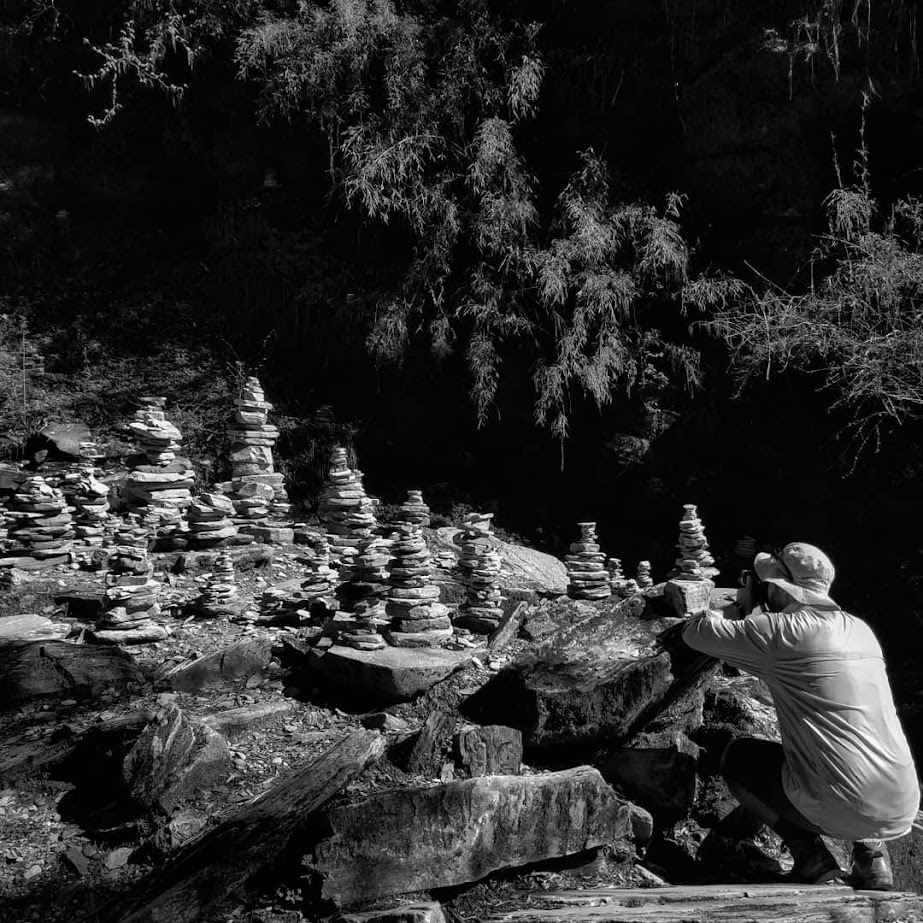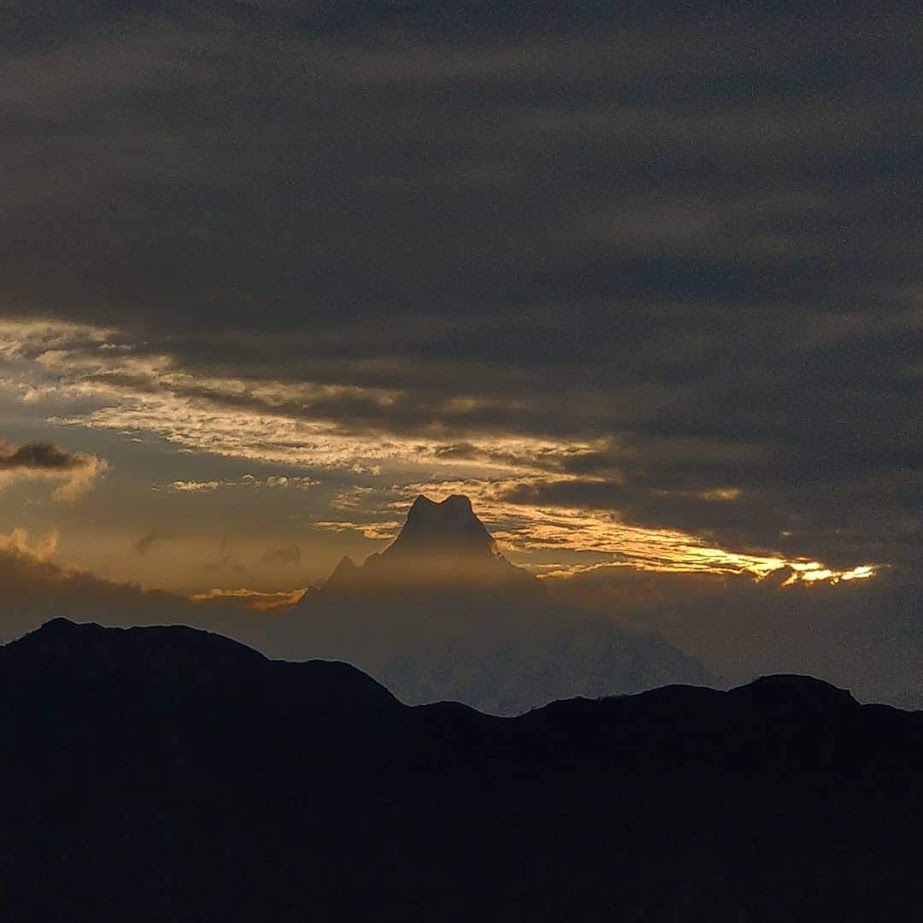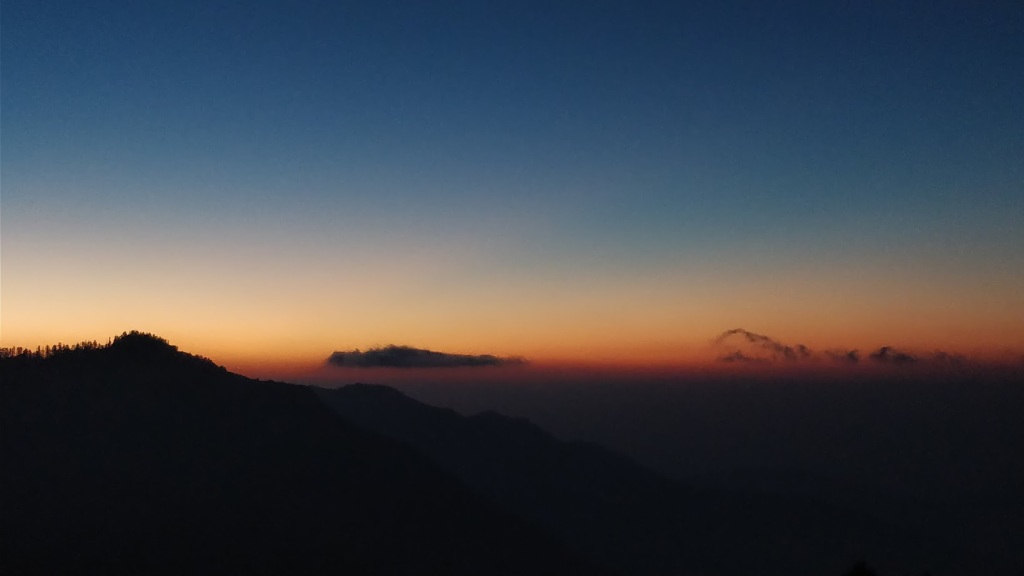Starting Point: Pokhara
Altitude: 3250m
Total time: 7 days
Average hike time per day: 5- 6 hours
Accommodation: Hotel and Teahouse
Food: Breakfast, Lunch, Dinner
End point: Pokhara
Difficulty: Moderate
Poon Hill Trek Itinerary (Starting from Ghandruk and Ending in Nayapul):
Day 1: Nayapul to Tikhedhunga
- Distance: 8 km
- Elevation Gain: 500 meters
- Duration: 5-6 hours
- The trek begins in Nayapul and passes through beautiful landscapes, charming villages, and terraced fields. You’ll gradually ascend to Tikhedhunga, enjoying glimpses of the Annapurna and Machapuchare mountains.
Day 2: Tikhedhunga to Ghorepani
- Distance: 12 km
- Elevation Gain: 1,300 meters
- Duration: 6-7 hours
- The trail takes you through rhododendron forests, crossing the famous Ulleri 3,200 steps. As you ascend, the views of Annapurna South, Hiunchuli, and Machapuchare become more prominent. Ghorepani is a charming village surrounded by dense forests.
Day 3: Ghorepani to Poon Hill and Tadapani
- Early morning hike to Poon Hill:
- Distance: 3 km (round trip)
- Elevation Gain: 400 meters
- Duration: 2 hours
- After sunrise views of the Himalayas, trek to Tadapani:
- Distance: 12 km
- Elevation Loss: 500 meters
- Duration: 6 hours
- Enjoy panoramic views of the Annapurna and Dhaulagiri ranges. The trail then descends through rhododendron forests to Tadapani.
Day 4: Tadapani to Ghandruk
- Distance: 9 km
- Elevation Loss: 650 meters
- Duration: 4-5 hours
- Descend through forests and terraced fields to the Gurung village of Ghandruk. Ghandruk offers stunning views of Annapurna South, Machapuchare, and Himchuli.
Day 5: Ghandruk to Nayapul
- Distance: 12 km
- Elevation Loss: 1,100 meters
- Duration: 5-6 hours
- The trek descends through picturesque villages and lush landscapes. Enjoy the last glimpses of the mountains as you reach Nayapul, concluding your memorable Poon Hill trek.
Throughout the trek, you’ll witness diverse flora and fauna, charming villages, and stunning vistas. The rhododendron forests, traditional Gurung villages, and panoramic mountain views make the Poon Hill trek a truly enriching experience.
Included:
√ Staying in Lodge or Teahouse during the trek
During the trek we stay in lodges or teahouses. These are simple in nature, but fully equipped. Do not expect too much luxury.
√ English speaking guide and a porter
One porter per trekker. This way you don’t have to carry your complete equipment yourself. The guide speaks English.
√ Salary, food, insurance, and accommodation for guide and porter
The total amount covers not only your own basics, but also those of your guide and porter. No unpleasant surprises.
√ Breakfast, Lunch, and Dinner
Breakfast, lunch and dinner are prepared during the trek. The meals are basic, but will give you enough energy for your appetite. Fruit is also available after each meal.
√ Coffee and Tea
Coffee and tea are also organized by the trekking company. Every morning fresh coffee and tea are made. There are scheduled breaks to enjoy this.
√ Permit and TIMS
The total amount includes costs for the permit. This also applies to the TIMS Card, to the Trekkers Information Management System.
Excluded:
× Visa for Nepal
Your trekking company will not take responsibility for the travel visa for Nepal.
× Flights to and from Nepal
The total amount is also exclusive of flights to and from Nepal
× Accommodation in Kathmandu and Pokhara including breakfast
Before and after the trek you have to take care of your own accommodation.
× Personal expenses
All personal expenses such as drinks at the bar, washing and other similar expenses are for your own account.
× Travel Insurance Including Repatriation
Your international travel insurance is your own responsibility. It is important that your travel insurance also covers adventures at a high altitude. Discuss your itinerary with the insurance company before you travel to Nepal.
× Tipping
Tips for guides and porters are exclusive. You decide what you want to tip, but be generous and read our blog post about tipping when you are planning to go trekking in Nepal.
× Desserts, Hot Shower, Hot Water, Mineral Water and Wi-Fi
Certain luxuries such as desserts, a hot shower, hot running water, bottles of mineral water and Wi-Fi should be missed during a typical trek in the Himalayas. The water we encounter along the way is drinkable and is heated or boiled by us.
Packing List
Trekking in Nepal requires decent gear. Especially the basics like an 80-90l backpack and quality trekking socks.
Documents
– Passport
– Travel insurance
– Boarding passes for flights
– 2 passport photos
– Driving License
– Dollars in cash
– Credit card (make sure you have $500 available on your card
in case evacuation by helicopter is required)
Sleep
– Sleeping bag
– Extra sleeping bag lining
Footwear
– Mountain shoes: 3 or 4 season lightweight
– Slippers or sandals for the city
– Aircraft shoes (optional)
Clothing
– Make sure you have non-cotton clothing for during the trek
– 2 t-shirts with underlayer (e.g. running t-shirts)
– Fleece / softshell jacket
– Waterproof jacket
– Down jacket for warmth
– Travel and citywear
– Underwear
– Trousers for underlayer (optional)
– Waterproof pants
– Trekking pants
– Trekking shorts (optional)
– 2 thick trekking socks
– Lightweight and breathable trekking socks
– Gloves and woolen hat
Accessories
– One backpack: 35 liters
– A duffel bag or backpack with straps to go over your back (Max 8kg weight for the porters to carry)
– Drybag or waterproof cover for your backpack
– Water bottle/thermos: at least 2 litres.
– Sunglasses
– Sunscreen
– Personal medication
– Inhaler, blister plasters, etc.
– General toiletries, contact lenses, spectacles (if necessary)
– Towel
– Electronics
– Headlight, travel adapter, phone & charger
– Lip balm
– Book
– MP3/Music and headphones







